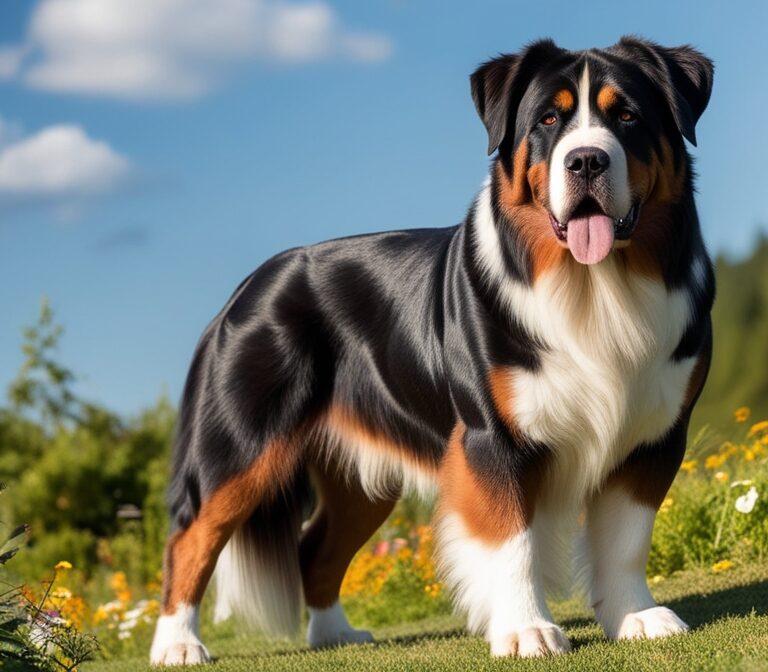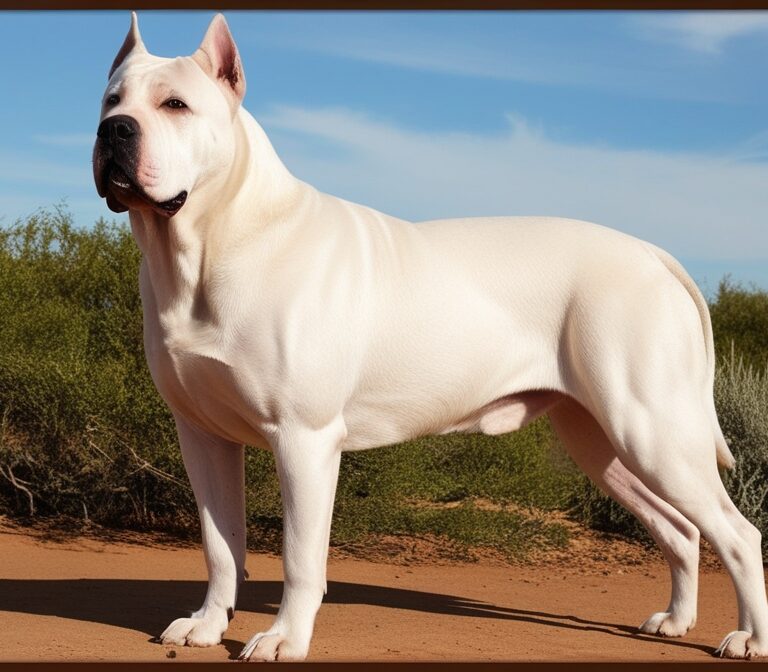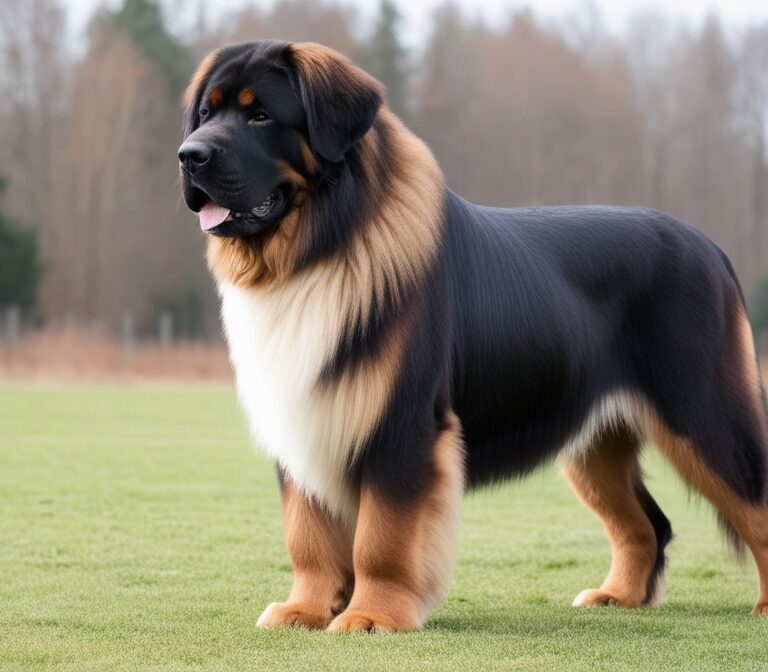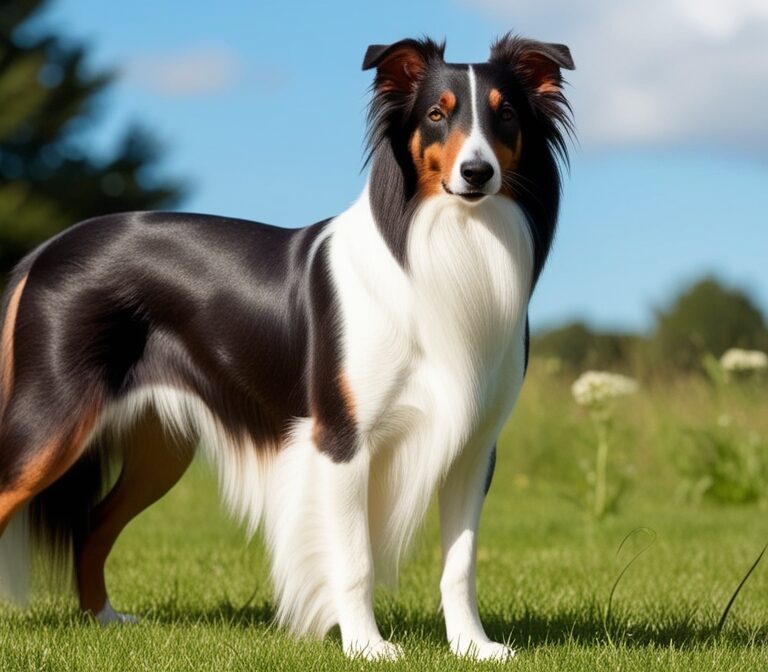Bouvier des Ardennes: Complete Breed Guide to History, Temperament, Care, and Training
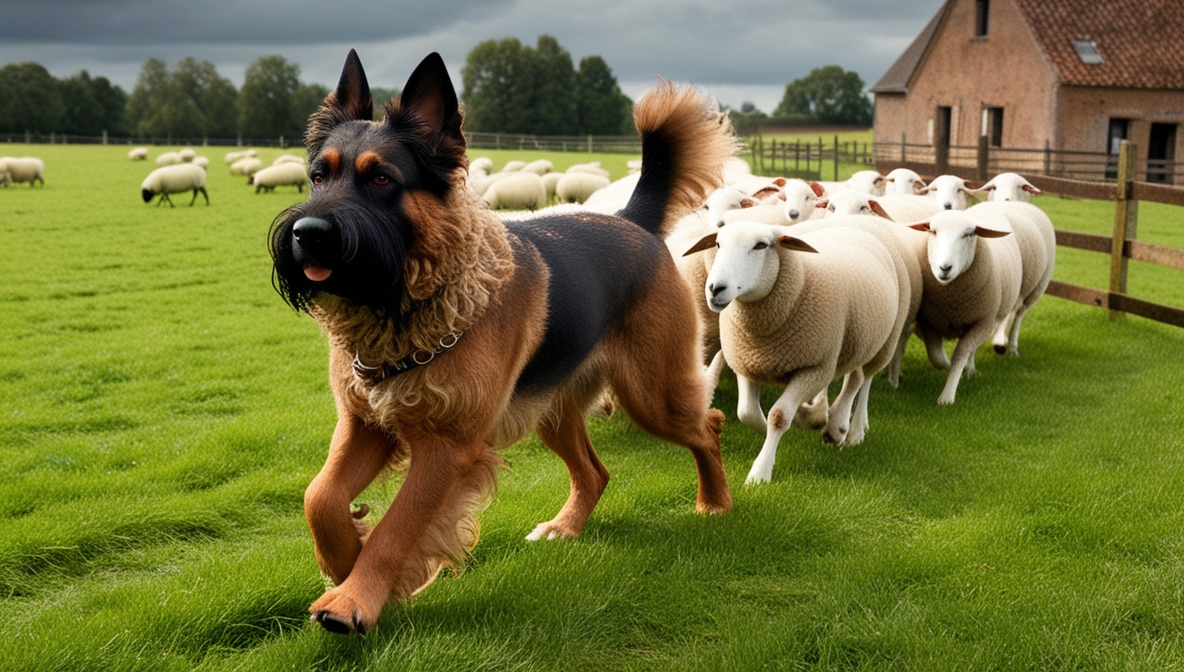
Overview
The Bouvier des Ardennes is a rare and rugged herding dog that originates from the Ardennes region of Belgium. Known for its rustic appearance, resilience, and hardworking nature, the breed was developed to assist farmers in managing cattle across rough terrain. Unlike some modernized working dogs, the Bouvier des Ardennes retains much of its traditional utility-focused design, with a compact but muscular build, a dense and weather-resistant coat, and a natural instinct for herding. Standing between 22 and 24 inches tall and weighing 55 to 77 pounds, it is smaller and stockier compared to the better-known Bouvier des Flandres. The breed is practical rather than ornamental, bred for stamina, agility, and problem-solving ability rather than show ring appearance. With its intense gaze, upright ears, and slightly rough coat texture, the Bouvier des Ardennes exudes strength and determination. Today, while still relatively rare outside Belgium, this breed is admired for its versatility, intelligence, and close bond with its handlers.
History and Origins
The Bouvier des Ardennes has a long history tied to the rural farming communities of Belgium, particularly in the Ardennes region. The name “Bouvier” comes from the French word bouvier, meaning “cowherd” or “oxherd,” reflecting the breed’s primary role as a cattle-driving dog. Farmers in this mountainous region needed hardy dogs capable of moving cattle over rocky, uneven pastures while enduring harsh weather conditions. Unlike breeds that were refined for conformation, the Bouvier des Ardennes was bred solely for its working ability, which explains its rugged, no-frills appearance. By the early 20th century, the breed faced decline due to modernization in farming and the devastation of World War I, which heavily impacted Belgian agriculture. Dedicated breeders revived the population through careful preservation efforts, emphasizing the breed’s traditional working traits. Today, though not as globally recognized as other Belgian herding breeds like the Malinois or Laekenois, the Bouvier des Ardennes remains a cultural treasure in its homeland and a testament to the enduring partnership between humans and working dogs.
Physical Characteristics
The Bouvier des Ardennes is medium-sized but powerfully built, with a compact frame designed for endurance and agility. Adult males typically stand 22 to 24 inches tall, while females measure slightly smaller, averaging 20 to 23 inches. Weight ranges from 55 to 77 pounds, with sturdy bones and a muscular body that supports long hours of work in challenging terrain. The coat is one of its most distinctive features, being thick, harsh, and weather-resistant, suited to the often cold and rainy Ardennes climate. Colors vary widely and can include brindle, gray, black, fawn, and even peppered combinations, with no strict color limitations for working dogs. The ears are usually cropped in traditional practice, though natural ears are medium-sized and carried erect. The tail may be docked or naturally short, consistent with its historical role where a long tail was considered a hindrance during work. The head is strong and broad, with expressive dark eyes that convey intelligence and alertness. Overall, the breed’s appearance is functional, reflecting its origins as a dog built for labor rather than aesthetics.
Temperament and Personality
The Bouvier des Ardennes is best described as loyal, hardworking, and highly intelligent. Bred for herding cattle, it possesses strong instincts for control and direction, making it a natural problem-solver in work-related tasks. It is courageous and protective, often wary of strangers but deeply bonded to its family. Unlike some more independent herding breeds, the Bouvier des Ardennes tends to thrive on close cooperation with its handler, showing both responsiveness and adaptability. This makes it a strong candidate for obedience training and advanced working roles. With children, it is generally affectionate and protective, although its herding instincts may occasionally lead to attempts at “rounding up” family members. Early socialization is important to channel protective instincts into balanced behavior. While not overly aggressive, the breed is naturally alert and makes an effective watchdog. Its energy and intelligence require daily exercise and mental challenges to prevent restlessness or destructive behaviors. For committed owners, the Bouvier des Ardennes is a devoted, reliable, and highly trainable companion.
Health and Lifespan
The Bouvier des Ardennes is generally a healthy breed, benefiting from its traditional working heritage and a lack of excessive selective breeding. Its average lifespan is between 10 and 12 years, with many individuals living beyond that with proper care. However, like many medium-to-large working breeds, it is predisposed to certain health conditions. Hip dysplasia and elbow dysplasia are concerns, especially when dogs are overexercised during rapid growth stages. Bloat (gastric torsion) is another risk, which is common in deep-chested breeds and requires immediate veterinary attention if symptoms arise. Eye conditions such as cataracts and progressive retinal atrophy have been reported, though not as prevalent as in some other herding breeds. Responsible breeders conduct health testing to minimize genetic risks. Maintaining a healthy weight, providing joint-supportive nutrition, and scheduling regular veterinary checkups can significantly improve quality of life. Overall, with proper preventive care, the Bouvier des Ardennes is a robust and resilient breed.
Grooming and Maintenance
The Bouvier des Ardennes requires moderate grooming to maintain the health of its thick, weather-resistant coat. Unlike silky-coated breeds, its coat is coarse and dense, helping repel dirt and moisture. Weekly brushing is sufficient to remove dead hair and prevent matting, although during seasonal shedding, more frequent grooming may be necessary. Bathing should be occasional, as overbathing can strip natural oils that protect the coat. Ear cleaning is important, particularly if the dog has natural ears, as debris and moisture can accumulate. Regular nail trimming is essential to prevent overgrowth, especially since this is an active working dog that spends significant time outdoors. Dental hygiene should not be overlooked, as gum disease and tartar buildup can occur in any breed. Grooming sessions also provide an opportunity to check for ticks, burrs, or skin irritations, especially if the dog spends time in rural or forested environments. With consistent grooming and care, the Bouvier des Ardennes remains comfortable, healthy, and ready for work or companionship.
Training and Exercise Needs
The Bouvier des Ardennes thrives when given both physical activity and mental stimulation. As a working herding breed, it is not content with a sedentary lifestyle and requires structured exercise to remain balanced. Daily walks of at least 60 to 90 minutes, combined with free play in a secure yard, provide necessary physical outlets. Beyond walks, this breed benefits from advanced training such as obedience, agility, and herding trials, which allow it to channel natural instincts productively. Training should begin early, as the Bouvier des Ardennes is highly intelligent but also independent-minded. Positive reinforcement methods, including rewards, praise, and consistency, work best for establishing obedience. Harsh corrections are counterproductive, as they may cause stubbornness or distrust. Because of its herding background, the breed enjoys tasks that involve problem-solving, direction, and cooperation with its handler. Without sufficient stimulation, the Bouvier des Ardennes may develop destructive behaviors such as digging, chewing, or excessive barking. For owners committed to active engagement, this breed demonstrates remarkable trainability and loyalty.
Feeding and Nutrition
Proper nutrition is crucial to maintaining the health and stamina of the Bouvier des Ardennes. As a medium-to-large active breed, it requires a balanced diet rich in protein, healthy fats, and essential vitamins. High-quality dry kibble formulated for working or herding dogs is a practical option, though many owners supplement with fresh lean meats, vegetables, and whole grains for variety. The average adult requires between 2.5 and 3.5 cups of food daily, divided into two meals to reduce the risk of bloat. Puppies need a nutrient-dense diet that supports bone and joint development, but overfeeding should be avoided to prevent rapid growth, which can exacerbate joint issues. Fresh water must always be available, especially during hot weather or after strenuous activity. Some Bouviers thrive on a raw or home-cooked diet, but these should be carefully balanced with veterinary guidance. Regular monitoring of weight and body condition ensures that the dog remains lean and muscular rather than overweight, which is essential for a breed expected to remain agile and durable throughout its life.
Role as a Working Dog
The Bouvier des Ardennes has retained its identity as a true working dog, continuing to serve on farms and in herding trials. Historically, it was prized for its ability to drive cattle across rugged terrain, a task requiring strength, stamina, and independent problem-solving. Unlike some herding breeds that rely heavily on handler commands, the Bouvier des Ardennes is capable of working with autonomy, making decisions in the field when direct guidance is not possible. Beyond herding, the breed has also been employed in guarding roles, protecting farm property and livestock from intruders. Its natural suspicion of strangers and protective instincts make it an effective deterrent without being excessively aggressive. In modern times, while mechanization has reduced reliance on herding dogs, the Bouvier des Ardennes still excels in competitive dog sports such as herding tests, obedience, and agility. Its versatility ensures that it remains valued not only as a historical farm dog but also as a modern companion with diverse abilities.
Family Compatibility
Despite its working background, the Bouvier des Ardennes can adapt well to family life when its exercise and mental needs are met. It is known for forming strong bonds with its household, often showing deep loyalty and affection. With children, it tends to be protective and watchful, making it a dependable guardian as long as interactions are supervised to prevent accidental roughness due to the dog’s size and strength. The breed coexists peacefully with other pets if socialized from an early age, though its herding instincts may surface in the form of nudging or circling behaviors. Bouviers thrive best in active households that provide structured routines, outdoor activities, and consistent training. Apartment living is generally unsuitable due to their energy levels and need for space, but a suburban or rural home with a secure yard is ideal. Families who can integrate the Bouvier des Ardennes into daily activities—such as hiking, jogging, or outdoor play—will find the breed to be both a protector and a loving companion.
Comparisons with Other Belgian Breeds
Belgium is home to several renowned working and herding breeds, and the Bouvier des Ardennes is often compared with them. Compared to the Belgian Malinois, which is sleek, high-strung, and favored for police and military work, the Ardennes is stockier, calmer, and more livestock-focused. The Bouvier des Flandres shares a similar herding heritage but is larger, heavier, and more widely recognized internationally, while the Ardennes remains closer to its rustic origins. The Belgian Laekenois, another rare breed, has a wiry coat and is more refined, while the Ardennes retains a more rugged and practical look. The Belgian Sheepdog (Groenendael) and Tervuren are elegant herders often used in performance sports, whereas the Bouvier des Ardennes is more of a utilitarian farm worker. These comparisons highlight the Ardennes’ uniqueness: it is a robust, no-nonsense breed built for endurance and practicality rather than aesthetics or specialized modern roles.
Adoption and Availability
The Bouvier des Ardennes is a rare breed, even within its native Belgium, making adoption and ownership outside Europe challenging. Dedicated breed clubs and organizations, such as the Union Royale Cynologique Saint-Hubert (Belgium’s national kennel club), work to preserve and promote the breed. In North America and other parts of the world, the breed is less accessible, with only a handful of breeders specializing in its preservation. Prospective owners often face waiting lists and may need to import puppies, which can significantly increase costs. Adoption through rescue organizations is rare due to the limited global population, but occasionally Bouviers may be rehomed when owners underestimate their energy and working requirements. Anyone considering adoption or purchase should work with reputable breeders or clubs that prioritize health testing, temperament evaluation, and responsible breeding practices. Patience and diligence are essential for securing a healthy, well-bred Bouvier des Ardennes.
Popularity and Recognition
The Bouvier des Ardennes remains one of the lesser-known Belgian breeds, overshadowed internationally by the Belgian Shepherd varieties and the Bouvier des Flandres. It is recognized by the Fédération Cynologique Internationale (FCI), which acknowledges its heritage and standard, but it has yet to achieve widespread recognition from major kennel clubs such as the American Kennel Club (AKC). This limited recognition contributes to its rarity but also preserves its authenticity as a true working breed rather than a show dog. In Belgium, the breed enjoys modest popularity among farmers, rural families, and breed enthusiasts committed to preserving traditional herding dogs. While its global presence is small, growing awareness among working-dog communities and enthusiasts of rare breeds has sparked increasing interest. Its scarcity enhances its appeal to dedicated owners seeking a unique, heritage-rich companion rather than a mainstream breed.
Exercise Requirements in Different Life Stages
The exercise needs of the Bouvier des Ardennes vary depending on age and development. Puppies require short, controlled bursts of activity to avoid strain on developing joints, with interactive play being more beneficial than forced long walks. Adolescents are at their most energetic and require structured activities such as basic obedience training, socialization, and moderate endurance exercises to channel energy productively. Adults thrive on vigorous daily exercise, including hiking, agility drills, and herding simulations. In senior years, activity levels should be adjusted to preserve mobility without overexertion, with gentle walks and mental enrichment serving as valuable outlets. Understanding these stages helps owners support their Bouvier des Ardennes with age-appropriate routines that promote long-term health and well-being.
Mental Stimulation and Enrichment
Because of its high intelligence, the Bouvier des Ardennes requires consistent mental challenges. Owners must provide more than physical exercise alone, as boredom often leads to problem behaviors. Puzzle feeders, scent-tracking games, and interactive training sessions keep the dog mentally engaged. Herding exercises or structured jobs such as carrying a backpack during hikes mimic the purposeful work the breed was historically bred for. Even within the home, obedience practice, trick training, and hide-and-seek games offer valuable stimulation. This breed thrives when given responsibilities and quickly becomes restless in an unstimulating environment. Mental enrichment is just as important as physical activity for ensuring a balanced, happy companion.
Socialization Needs
Socialization is critical for the Bouvier des Ardennes, given its naturally protective instincts and suspicion of strangers. Early exposure to diverse environments, people, and other animals ensures the breed grows into a confident, well-mannered adult. Puppy socialization classes, supervised interactions with children, and controlled introductions to other dogs provide essential learning opportunities. Without early and consistent socialization, the breed may become overly cautious or territorial, making it harder to manage in family or community settings. Properly socialized Bouviers, however, are affectionate with their family, stable around other pets, and dependable watchdogs without unnecessary aggression.
Bouvier des Ardennes in Working Trials and Sports
Although developed as a traditional farm dog, the Bouvier des Ardennes also excels in modern canine sports. Herding trials remain a natural outlet, allowing the breed to demonstrate its instinctive ability to control livestock. Beyond herding, the dog’s agility, strength, and intelligence make it well-suited for obedience competitions, tracking events, and agility courses. Some Bouviers also succeed in protection training and search-and-rescue work, where their courage and problem-solving instincts shine. These activities not only showcase the breed’s versatility but also provide meaningful challenges that satisfy its working heritage. Owners interested in competitive dog sports will find the Ardennes to be a determined and enthusiastic partner.
Living Environment and Housing Needs
The ideal home environment for a Bouvier des Ardennes is one with ample outdoor space and access to daily exercise. A rural or suburban property with a secure yard allows the breed to stretch its legs and expend energy safely. While it can adapt to indoor living, apartment environments are generally unsuitable due to its size, energy levels, and need for outdoor activity. This is a breed that thrives when included in family routines rather than left alone for extended periods. Access to open fields, trails, or farms provides the best conditions for this working dog, though active urban households with a commitment to exercise may also succeed.
Bouvier des Ardennes as a Guard Dog
In addition to herding, the Bouvier des Ardennes has long been valued as a natural guardian of livestock and property. Its alertness, courage, and protective instincts make it an excellent watchdog. Unlike overly aggressive breeds, the Ardennes prefers to deter intruders with its presence and warning bark, stepping in with assertiveness only when necessary. These traits make it a reliable farm protector as well as a dependable household guardian. With proper training and socialization, it balances protectiveness with restraint, ensuring loyalty to its family without unnecessary hostility toward strangers.
Training Challenges and Solutions
While highly intelligent, the Bouvier des Ardennes can present training challenges due to its independent streak. This independence, an asset in farm work, sometimes translates into stubbornness during obedience exercises. Consistency, patience, and positive reinforcement are the keys to success. Short, engaging sessions prevent boredom and help maintain focus. Harsh corrections are counterproductive, as they may undermine trust and reduce the dog’s willingness to cooperate. Instead, using structured tasks, rewarding correct responses, and keeping training sessions varied ensures steady progress. With an experienced and confident handler, the breed is capable of excelling in advanced training and specialized tasks.
Common Misconceptions About the Breed
Because of its rarity, the Bouvier des Ardennes is often misunderstood. One common misconception is that it is identical to the Bouvier des Flandres, when in reality the Ardennes is smaller, stockier, and more rustic. Another myth is that it is too aggressive to be a family companion, when in fact, with proper training and socialization, it is affectionate and protective. Some also believe it is unsuitable as a household pet due to its working origins, but in active families, it adapts well and thrives with structured routines. Understanding the true nature of the breed helps prevent misconceptions that could otherwise discourage potential owners.
Suitability for First-Time Owners
The Bouvier des Ardennes is best suited for experienced dog owners rather than complete beginners. Its high energy, intelligence, and independent nature demand a handler who understands working breeds and is willing to provide firm but fair leadership. First-time owners may struggle with its exercise requirements and training challenges, potentially leading to behavioral issues. However, active individuals with a commitment to learning, training, and engagement may find success even as first-time owners. For those prepared to invest the necessary time and effort, the Bouvier des Ardennes proves to be a deeply rewarding companion.
Future of the Breed
The future of the Bouvier des Ardennes depends heavily on conservation efforts and responsible breeding programs. With modernization reducing the demand for traditional herding dogs, preservation has become a cultural and historical responsibility. Breed clubs in Belgium continue to promote awareness and encourage controlled breeding to prevent the loss of genetic diversity. International interest in rare working breeds is also slowly increasing, which may expand the Ardennes’ presence outside its homeland. For this breed to thrive, continued education about its value as both a working and companion dog is essential. Enthusiasts and preservationists play a key role in ensuring that the Bouvier des Ardennes remains not only a living piece of history but also a viable breed for future generations.
Breed Preservation Efforts in Belgium
The Bouvier des Ardennes is considered a cultural treasure in Belgium, and preservation efforts are critical to its survival. Local breed clubs, such as the Club du Bouvier des Ardennes, work with farmers, breeders, and historians to ensure the breed’s traits remain intact. Government-backed initiatives have occasionally supported conservation, recognizing the breed’s importance as part of rural Belgian heritage. Small-scale breeders continue to focus on working ability rather than show qualities, keeping the Ardennes true to its roots. Without these efforts, the breed’s population would likely have diminished further due to industrial farming.
Seasonal Care and Climate Adaptability
The Bouvier des Ardennes has a hardy, weather-resistant coat that equips it to thrive in various climates. In colder regions, its dense undercoat provides insulation against frost and snow, making it a reliable farm dog year-round. During warmer months, owners must ensure the dog has adequate shade and hydration, as its thick fur can trap heat. Seasonal shedding occurs heavily in spring and fall, requiring more frequent grooming during these times. This adaptability makes the breed versatile, but owners must adjust care routines seasonally to keep the dog comfortable and healthy.
Grooming Myths and Realities
Despite its rugged appearance, the Bouvier des Ardennes is not as high-maintenance as some might assume. Many believe its dense coat requires professional grooming, but in reality, regular brushing at home is sufficient. Bathing should be minimal, as overwashing strips natural oils that protect the coat. Unlike breeds developed for show, the Ardennes does not require trimming or styling, reflecting its practical farm-dog heritage. By debunking these grooming myths, owners can better understand how simple and manageable coat maintenance truly is.
Unique Traits That Set the Breed Apart
Several characteristics make the Bouvier des Ardennes distinct among herding breeds. Its naturally bobbed tail, coarse coat, and compact, muscular build give it a rugged appearance suited for farm work. Unlike some breeds bred for appearance, the Ardennes retains a purely functional design focused on endurance and agility. Its combination of independence and loyalty makes it an adaptable worker, capable of acting both with and without human direction. These unique traits highlight why the breed has endured for centuries, even without widespread international recognition.
Famous Historical Roles
The Bouvier des Ardennes has played notable roles beyond farm work throughout history. During World War I and II, the breed was used as a messenger and draft dog, pulling small carts and transporting supplies in difficult terrain. Farmers also relied on them for guarding livestock when soldiers were away at war. These historical contributions strengthened the breed’s reputation for courage, resilience, and loyalty. While it may not be as famous globally as other Belgian breeds, its history reflects a strong connection to both agriculture and military service.
Health Screening and Preventive Care
To ensure a long and healthy life, the Bouvier des Ardennes benefits from targeted health screenings. Responsible breeders test for hip dysplasia, eye disorders, and heart conditions to reduce hereditary risks. Regular veterinary check-ups, dental cleanings, and parasite control are essential for maintaining health. Because this breed is naturally robust, many owners underestimate the importance of preventive care, but early detection of issues significantly improves outcomes. A well-maintained Ardennes can live between 10 to 14 years, remaining active and capable well into old age.
Cost of Ownership
Owning a Bouvier des Ardennes involves significant investment, especially since the breed is rare. Initial costs for a well-bred puppy can range between €1,200 to €2,500, depending on breeder reputation and location. Importation costs outside Belgium can raise this figure substantially due to shipping and documentation fees. Annual expenses, including food, veterinary care, grooming supplies, and training, typically range from €800 to €1,200. While this is comparable to other medium-to-large working breeds, potential owners must be prepared for higher initial costs due to scarcity.
Role in Belgian Culture and Identity
In Belgium, the Bouvier des Ardennes is more than a working dog—it symbolizes resilience, rural tradition, and national pride. Farmers view the breed as a trusted partner, while cultural organizations see it as part of the country’s agricultural identity. In rural festivals, herding demonstrations sometimes feature the Ardennes to showcase its skills to the public. Though less internationally known, within Belgium it holds a place of respect as a faithful representative of the country’s farming heritage.
Travel and Transport Considerations
For families who travel with their Bouvier des Ardennes, planning is essential due to the breed’s size and energy levels. A spacious vehicle with proper ventilation is necessary for comfort during long trips. Because the breed is protective, it may react strongly to unfamiliar environments, so gradual introductions and consistent routines help ease transitions. International travel requires additional preparation, including health certificates and potential quarantine depending on the destination. With adequate planning, the Ardennes adapts well to travel, especially if given regular exercise and secure rest areas.
Myths About Rarity and Extinction
Some dog enthusiasts mistakenly believe the Bouvier des Ardennes is extinct or nearly impossible to find. While it is rare, particularly outside Belgium, active conservation and breeding programs ensure its survival. In fact, the breed has seen a modest resurgence in the last two decades, thanks to the efforts of dedicated enthusiasts. Misunderstandings about its rarity often discourage potential owners, but breed clubs provide guidance and connect interested families with reputable breeders. Far from extinct, the Ardennes continues to thrive within its homeland and is gradually gaining recognition abroad.
Conclusion
The Bouvier des Ardennes is a rare yet remarkable breed, embodying centuries of partnership between Belgian farmers and their hardworking dogs. With its rugged build, weather-resistant coat, and sharp intelligence, it was designed for practical tasks such as herding cattle and guarding property in challenging conditions. Today, while mechanization has reduced its farm role, the breed continues to thrive in herding trials, obedience, and as a loyal family companion. It requires consistent exercise, structured training, and an active household to meet its physical and mental needs. Though rare outside Belgium, those fortunate enough to share their lives with a Bouvier des Ardennes will find in it a devoted, versatile, and courageous partner. More than just a dog, it represents a living piece of Belgian agricultural history and a testament to the enduring value of working breeds.

